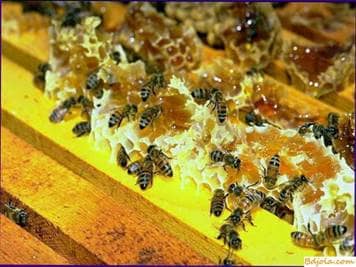
Cucumbers are one of the main crops grown in greenhouses. This is a highly profitable culture, which is of great importance in human nutrition. Cucumbers contain 94-95% water, 1.5-2 – sugar, 1 – protein and 0.75% fiber. In addition, they have aromatic substances, pectonizing enzymes that promote the assimilation of proteins and vitamins B, B2, C, PP. They are rich in iodine and contain it more than other vegetable crops and potatoes.
Homeland of cucumbers are areas of tropical Asia, characterized by a damp climate and even high temperatures. Therefore, cucumbers are demanding relative humidity of air – 80-90%, soil – 70-80% of the total moisture capacity and heat-25 њ C (± 7 њ).
Cucumbers, in comparison with tomatoes and other fruit-bearing crops cultivated in greenhouses, are the least demanding for light intensity. However, insufficient intensity of solar radiation and a short duration of the day (from October to February) do not allow growing cucumbers in the greenhouses of the central strip of the country without additional lighting.
Cucumbers are annual plants with a pentagonal creeping stalk. For convenience in work cucumbers tie vertically with a twine: clinging to the twine of antennae, plants rise up.
Cucumber flowers are dioecious. Male and female flowers are located on the plant separately. Female flowers have an ovary in the form of a small cucumber. Pollen is large, sticky and the wind is not tolerated. Pollination of flowers occurs only due to bees and other insects.
Stigmas of female flowers are ready to receive pollen even before the opening of the corolla. Pollen of male flowers also ripens before the beginning of flowering and has high viability (under favorable conditions up to three days). However, the highest binding quality of fruits and their good quality will be with pollination of flowers in the first hours of flowering.
Diversity of flowers is to some extent unprofitable for the plant itself. Bees, when visiting one kind of flowers, do not usually pollute them. This can also be the case when bees collect only pollen. Therefore it is important that as many bees as possible work on flowers.
Many researchers found that female flowers of cucumbers in greenhouses of the bee are visited about 3 times less often compared to male flowers, especially in low light conditions. This is because the male flowers for bees are more attractive. Since a relatively small number of flowers bloom in the greenhouses, the bees are forced to work simultaneously on male and female flowers. Closer to noon, the pollen from the flowers is completely removed. Later they continue to collect only the nectar, but since there are pollen on the villi of their body, they transfer it to the stigmas of the pistils, therefore, for saturated pollination of the flowers, according to the data, 7 to 9 visits are required.
The activity of summer bees depends on the allocation of nectar flowers, which is determined by their variety and the complex of agricultural techniques of the cultivated crop. Especially favorable for the allocation of nectar flowers to flowers is the timely introduction of potassium-phosphorus fertilizers. The use of nitrogen fertilizers has an effect only at moderate dosage and in combination with other fertilizers. It is inadmissible to introduce large doses of weakly decomposed manure into moist soil, as this can cause poisoning of plants with ammonia and hydrogen sulphide.
It should be borne in mind that when cucumbers were grown for a long time in greenhouses without changing soil, toxic substances accumulate in the soil, one of which is sodium chloride, which adversely affects the growth of the root system of plants. If a lot of acidic soil is added to the hothouse soil, especially peat without sufficient liming, then oxides of iron, manganese, and mobile aluminum will be harmful to plants.
Cucumbers are sensitive to disturbance of temperature and especially mineral nutrition. Both inadequate and excessive watering of plants causes disturbances in plant development.
In all the cases described, the plants will be physiologically depressed. Flowers in a smaller amount will give off nectar. Despite the fact that the flower is pollinated, the ovaries dry up or deformed pear-shaped fruits are formed.
Улья павильоны. Разведение пчел в лежаках.
Hothouse beekeeping